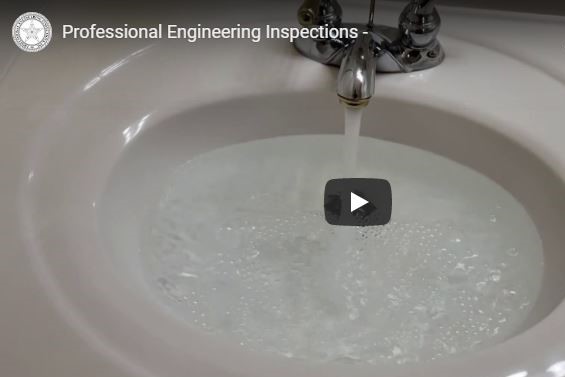A Leak is Reported
After an inspection report is issued, we get occasional contacts from clients who have questions about leak observations at drains or basins included in our report at bathrooms sinks or other similar fixtures they cannot find. This occurs because most sinks are used with only a small amount of water in them while running the faucet, and we check most fixture drains with a head of water when possible.
Using Your Head
A “Head” of water simply refers to the static pressure, or head pressure, created by a standing column of water. The pressure at the bottom of the water column increases as the depth of the water increases. We try to use this to our advantage when testing a sink drain allowing the sink to fill to near the flood rim of the sink, or its top edge, using the drain stopper and then releasing that water while observing the drain under the sink. This technique also allows us to test the basin, drain stopper, and overflow drain if the sink has one.
Finding The Leak
If you have ever wondered why we might find a leak you do not see with typical use of a sink, try filling the basin fully and observing its components when you release the water. Check the drain joints, stopper mechanism joints, and the drain connection to the basin. The best way to check is to lightly touch these joints but be careful as plumbers often use a sealant and this sealant is hard to get off your hands. If it is a small seeping type leak it may show up under this condition. Small leaks can sometimes self-seal with corrosion, hard water deposits, or debris too so it may take some investigation.
Some drains cannot be tested in this manner if they do not have integral drain stoppers or if the basins are excessively large due to the time limitations of an inspection. In those cases, we will perform a visual inspection of the drain and test further if there are observed indications it is likely to leak under normal use.


Recent Comments